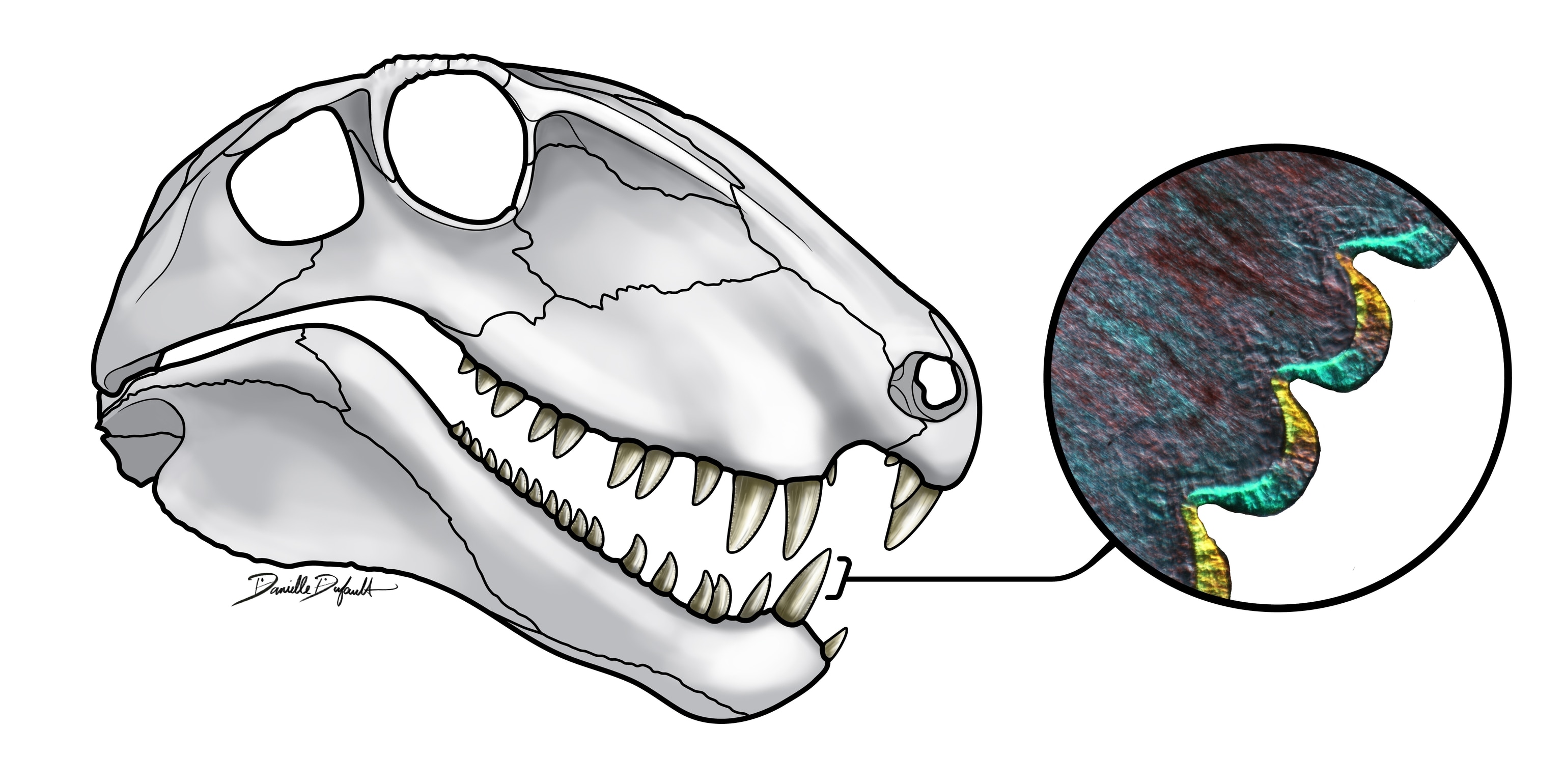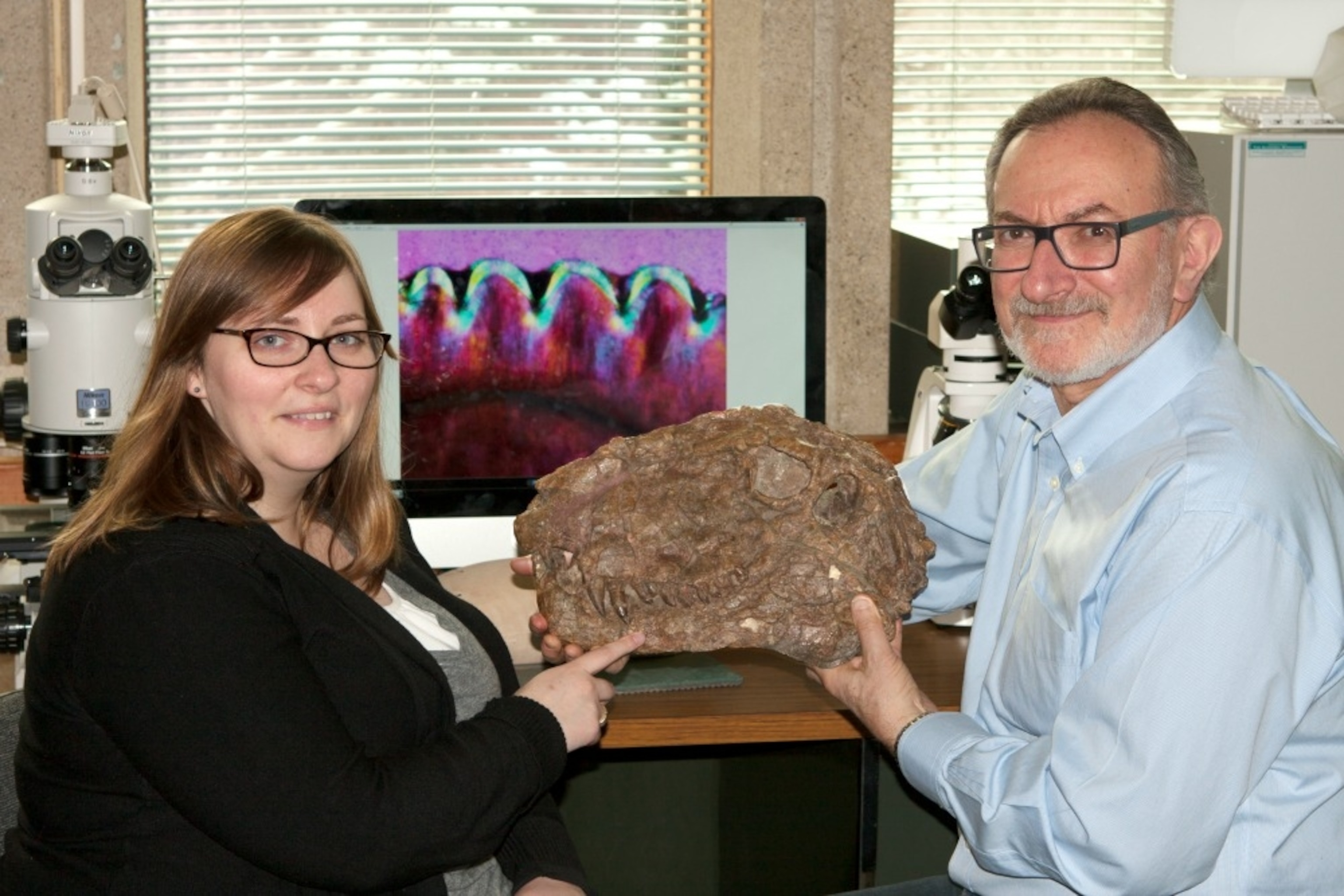Dimetrodon had a mouth full of novelty. Most conspicuous were several different tooth types in the sail-backed protomammal’s jaws – incisor-like teeth for gripping, stabbing canines, recurved rear teeth for shearing through flesh, and even hidden teeth on the roof of the mouth to pin struggling prey. This combination of features, shared by other members of the sphenacodontid group to which Dimetrodon belonged, originated with such predators as they thrived between 298 and 272 million years ago. And particular species of Dimetrodon even added a new wrinkle to the enamel-based armaments. As described by University of Toronto Mississauga paleontologists Kirstin Brink and Robert Reisz in a new Nature Communications paper, Dimetrodon is the earliest known land-stalking carnivore to have bitten through flesh with serrated teeth.
At a glance, the skulls of Dimetrodon look quite similar. Their main difference is in size. But the teeth of Dimetrodon are a different story. Details in enamel and dentine, Brink and Reisz report, distinguish three different kinds of cutting edges that distinguish smooth-toothed biters from those capable of a saw-edged chomp.

The oldest and smallest species in the study, Dimetrodon milleri, had teeth with straight cutting edges. Sharp, sure, but not especially well-suited to cutting through skin and muscle. By the time of the later, larger Dimetrodon limbatus, though, these carnivores had evolved small serrations in the enamel along the cutting edges of some of the teeth. The teeth of Dimetrodon grandis were even more specialized for cutting. Teeth in this last and largest species of Dimetrodon had prominent denticles along the slicing surface that created a serrated edge similar to that of predatory dinosaurs. Dimetrodon just happened to evolve “ziphodont” teeth about 40 million years earlier.
While the three species of Dimetrodon in the study don’t represent a direct evolutionary line, the connection between true serrated teeth and larger body size hint at an ancient arms race between competing predators and their prey.

Dimetrodon wasn’t the only predator around in the Early Permian. Other sphenacodontids, some with very similar skull anatomy, were after the same pool of protomammals, reptiles, and amphibians. This could have driven Dimetrodon to take up a different diet, Brink and Reisz hypothesize, and the changes to their teeth and body size hint that these distant cousins of ours were targeting larger prey with tough hides.
Big, serrate-toothed Dimetrodon evolved at a time when their herbivorous victims were also becoming larger. Barrel-bodied, pin-headed protomammals called caseids proliferated during this time, Brink and Reisz point out, and the sail-backed edaphosaurids, as well as amphibians called diadectids, also underwent an increase in body size. Damaged bones show that Dimetrodon weren’t above eating their own kind, either, and so it’s possible that the serrated teeth of species such as Dimetrodon grandis gave these carnivores the literal edge they needed to expand their menu options.

For now, though, the connections between body size, serrated teeth, competition, and prey availability remain murky. Brink and Reisz stress that further testing and investigation is needed to understand this new aspect of a familiar, but still mysterious relative of ours. From tooth to sail, we’re still getting to know Dimetrodon.
Reference:
Brink, R., Resiz, D. 2014. Hidden dental diversity in the oldest terrestrial apex predator DimetrodonHidden dental diversity in the oldest terrestrial apex predator Dimetrodon. Nature Communications. doi: 10.1038/ncomms4269

